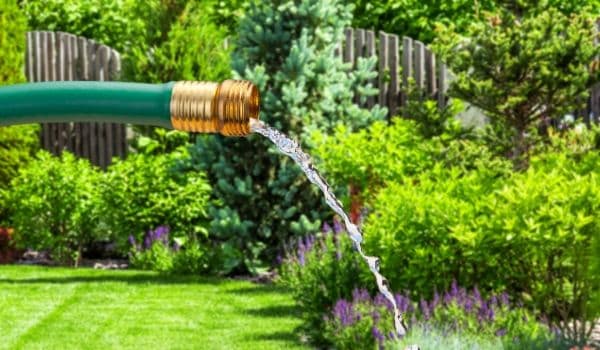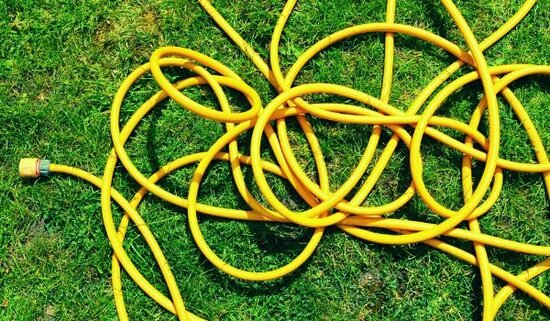Imagine waking up one fine morning with the sun shining gently and the air still clear from the buzz of activity. You go out to the garden to water your plants and as you open the water expecting a burst of water, all that you get is a trickle. That’s one way to ruin the mood, isn’t it?
All we want is to have strong water pressure going out of the nozzle when we squeeze the lever. Not only would we be able to do the job faster, but we would also be able to do it much better. So, how do we increase water pressure in a garden hose? You can start by following these steps I’m going to show you.

How to Increase Water Pressure in Garden Hose
1. Patch up leaks
Before we try to add more water to the hose, we have to make sure it’s not leaking or we would only be wasting more water. Check the line up for any leaks on the fittings or on the hose itself.
If you find leaks on the hose, it might be due to punctures or kinks. Find any object that could cause a puncture and try to remove it out of the hose’s way to avoid problems in the future.
To repair a leaky hose, you can use any of the following
- Electrical or duct tape – these tapes are commonly found in most households and should be good enough to fix up a leak temporarily. These tapes are only water-resistant and won’t stick for long with all the moisture coming from the leaks so you should try to get either of the next two.
- Silicon tape – this type of tape is water-resistant and sticks with itself without using any adhesive, it’s the perfect tape for small leaks on your garden hose. You can even use it for wires and other household repairs so you won’t have to worry about only using it once.
- Hose mender – when the hole is too big, you just have to cut it and let that part go. Connect the two separated hoses together using a hose mender — a small fitting with two hose barbs on each side.
If the leak is on the faucet, you may have a worn-out rubber gasket. Try to replace it when you can go to a hardware store or use silicon tape as a band-aid.
2. Straighten up kinks

Sharp twists and turns on a hose can greatly affect the pressure and flow of the water going through it. Each one is like having a valve that’s closed almost all the way through. Naturally, that’s gonna cause problems to the pressure.
You can avoid kinks by applying a splint to keep the area from twisting again. It’s basically just a small length of pipe you attach on the hose to keep it straight. Such a simple accessory can be a huge help in making sure your water flows without any obstacles.
To avoid kinks in the future, you’ll want to make sure you’re rolling and unrolling the hose properly every time you use it. Here’s a cool technique on how to do that; learn it once and never have to worry about it again.
3. Clean dirty hose
The insides of a garden hose will accumulate dirt and moss over time from everything that passes through it. After a few years, it can become so severe that it slows down the flow of water significantly leaving you with a sorry amount for your watering needs. You don’t need to endure that, there’s an easy way to clean it with the help of a simple kitchen sponge.
4. Adjust the pressure regulator
A pressure regulator makes sure that the water supply pressure going into your home stays below a setpoint to protect the plumbing in your home. When that setpoint is set too low, it can cause the pressure in some fixtures at your house to have less pressure than needed.
To increase it, rotate the adjusting screw which is usually located at the top counterclockwise. This opens up the opening inside to let more water flow. Just remember to check the pressure as you adjust. You don’t want to have very high water pressure specially if you have an older plumbing system.
5. Boost the supply pressure
In some cases, no matter how you adjust the regulator, it won’t make much difference. This is because there’s not much pressure going into your house in the first place.
It could be because you’re in a densely populated neighborhood with lots of other people using the water. Or, perhaps, you’re too far away and at the edge of your town’s water supply. It could also be because your house is situated at a higher elevation.
If any of it sounds like the problem, you need a pump. There are two ways you can go about it. You could get a water pressure booster pump for your whole home, so you can also enjoy a much better shower, or you can get a smaller garden hose pump. Any of the two is a better choice than having to tolerate the problem.